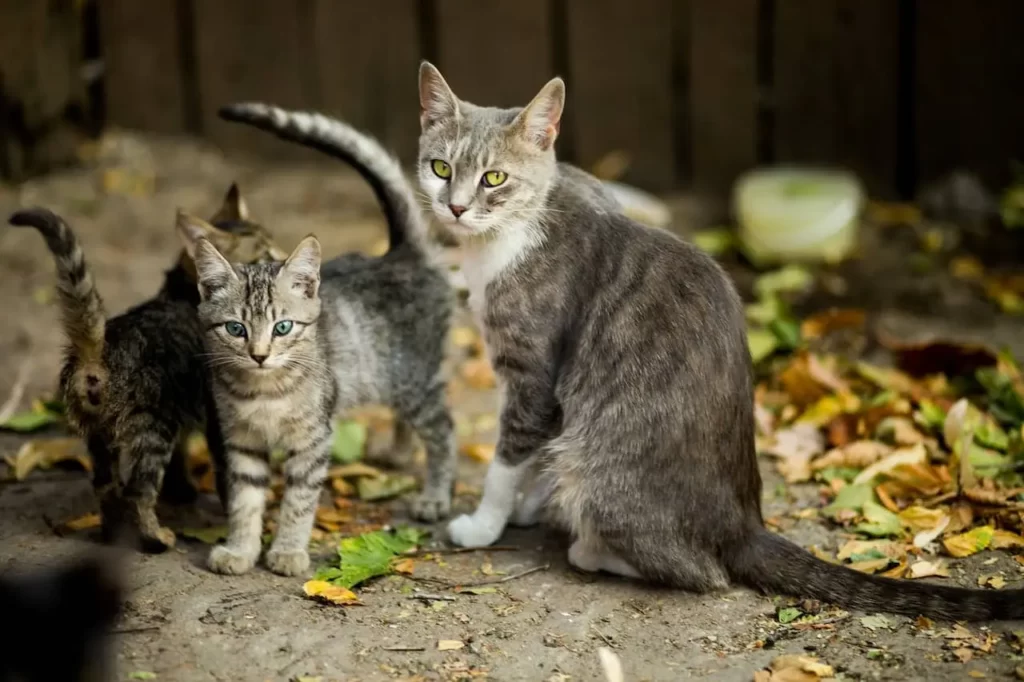Mama cats and their adorable kittens have always captivated our hearts and piqued our curiosity. One intriguing behavior commonly observed in mama cats is their tendency to move their kittens from one location to another.
In this blog, we will explore the reasons behind the Mama cat moving the kittens from one place to another.
Natural Behaviors of Mother Cats
The Nature of Mama Cat’s Instincts
Mama cats are driven by strong natural instincts to protect and care for their kittens. These instincts are rooted in their evolutionary history and are crucial for the survival of their offspring.
It’s essential to recognize that mama cats are hardwired to ensure the safety and well-being of their kittens.
The Concept of Nesting
One factor that plays a significant role in a mama cat’s behavior is the concept of nesting. Nesting refers to the process of creating a safe and secure environment for the kittens.
Mama cats instinctively seek out suitable locations where they can establish a nest and provide the best possible conditions for their young.
Reasons: Why Does Mama Cat Move Kittens?
1. Predators and Dangers in the Environment
One primary reason mama cats move their kittens is to protect them from potential predators and dangers in their surroundings.
By frequently changing the location, mama cats minimize the risk of predators detecting the scent or finding the nest. This behavior is especially crucial during the early stages when the kittens are most vulnerable.
2. Scent Masking
Mama cats are highly aware of the scents they leave behind, and they understand that predators can use these scents to locate their nests.
By moving the kittens and themselves to different locations, mama cats reduce the chances of predators tracking them down. This scent masking behavior is an effective survival strategy employed by mama cats.
3. Ensuring Cleanliness and Hygiene
Mama cats are meticulous about keeping their nesting area clean and free from waste. By moving the kittens, they can prevent the buildup of waste, which helps maintain a healthy and hygienic environment for the growing kittens.
This behavior also minimizes the risk of diseases or infections caused by unsanitary conditions.
4. Ensuring Proper Nutrition and Care
Another reason mama cats move their kittens is to ensure they have access to an adequate food supply.
As the kittens grow, their nutritional needs change, and mama cats may move them to a new location where food sources are more readily available. By doing so, mama cats can ensure the well-being and proper development of their offspring.
Signs of Mama Cats Moving Kittens
1. Restlessness and Constant Searching
When a mama cat decides to move her kittens, she may display signs of restlessness and constant searching for a new location. She may explore various hiding spots and evaluate their suitability for her nest.
2. Carrying Kittens or Gently Nudging
Mama cats use different methods to move their kittens. They may carry them in their mouth, carefully gripping them by the scruff of the neck, or they may gently nudge them to encourage them to move to a new spot. This behavior is a remarkable display of maternal care and protection.
3. Vocalizations and Increased Protective Behavior
During the moving process, mama cats often exhibit heightened vocalizations and protective behavior. They may growl or hiss to warn of potential threats and ensure the safety of their kittens.
The Role of Human Intervention
1. Observing and Respecting Mama Cats’ Instincts
It is crucial for us, as observers and caregivers, to understand and respect the instincts of mama cats. By recognizing their natural behaviors, we can create an environment that supports their instinctual needs and ensures the well-being of both mama cats and their kittens.
2. Avoiding Unnecessary Interference
While it is important to provide assistance and support to mama cats when needed, unnecessary interference during the moving process should be avoided.
Mama cats instinctively know what is best for their kittens, and interfering without cause may disrupt their natural behavior and cause stress.
3. Providing a Safe Environment
As responsible caretakers, we can play a supportive role by providing a safe and suitable environment for mama cats and their kittens.
This includes offering comfortable nesting materials, ensuring access to food and water, and creating a secure space where they can thrive.
Conclusion
The behavior of mama cats moving their kittens is a testament to their remarkable instincts and deep-rooted maternal care.
By understanding the reasons behind this behavior, we can appreciate the dedication and efforts mama cats put into ensuring the survival and well-being of their precious offspring.
Let us observe and respect these instinctual behaviors, allowing mama cats to fulfill their vital role in nurturing the next generation of feline companions.


